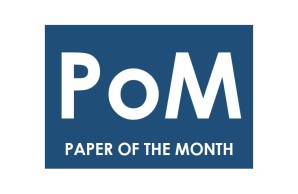Das Prodekanat für Forschung würdigt jeden Monat UKE Autorinnen und Autoren einer herausragenden Publikation, die in den vorangegangenen 2 Monaten hochrangig publiziert wurde. Ziel ist es, die am UKE enstandenen Forschungsergebnisse mit ihrer Bedeutung in der Wissenschaft einer größeren Öffentlichkeit am UKE vorzustellen. Der Aufruf zur Teilnahme richtet sich an Wissenschaftlerinnen und Wissenschaftler aller Fachgebiete. Einreichungsfrist für eine Bewerbung um die Auszeichnung des "Paper of the Month" ist jeweils Ende eines Monats (siehe Bewerbungsformular).
Das PoM-Archiv finden Sie hier:
UKE Paper of the Month November 2025
Spatiotemporal interaction of immune and renal cells controls glomerular crescent formation in autoimmune kidney disease
Sultana Z, Khatri R, Yousefi B, Shaikh N, Jauch-Speer SL, Schaub DP, Engesser J, Hellmig M, Piegsa V, Hube A, Sivayoganathan V, Borchers A, Peters A, Kaffke A, Zielinski S, Paust HJ, Goldbeck-Strieder T, Wenzel UO, Puelles VG, Hoxha E, Wiech T, Meyer-Schwesinger C, Huber TB, Panzer U, Bonn S, Krebs CF
ABSTRACT:
Rapidly progressive glomerulonephritis (RPGN) is the most aggressive group of autoimmune kidney diseases and is characterized by glomerular crescent formation with proliferation of parietal epithelial cells (PECs). However, the underlying mechanisms of glomerular crescent formation are incompletely understood. Here we provide a high-resolution spatial kidney cell atlas of 57 samples from patients with RPGN (ANCA-associated GN, lupus nephritis and anti-glomerular basement membrane-GN) to characterize the cell signaling pathways in glomerular crescent development. Early platelet-derived growth factor (PDGF) signaling from epithelial and mesangial cells caused PEC activation and proliferation in glomerular crescents, whereas later transforming growth factor (TGF)-β signaling from macrophages, T cells and epithelial and mesangial cells triggered expression of extracellular matrix components in PECs associated with glomerulosclerosis and disease progression. These findings were similar across the different GNs and were functionally validated in experimental GN by PDGF and TGFβ blockade. These results highlight a spatiotemporally conserved progression program into glomerular crescents and sclerosis and indicate new treatment options for autoimmune kidney disease.
STATEMENT:
Our goal was to uncover pathogenic cell communication within the kidney, making use of emerging spatial technologies with single-cell resolution — an essential requirement for dissecting interactions within the glomerular compartment.This study provides a rich dataset, with a high resolution annotated spatial map of the kidney biopsy samples from crescentic glomerulonephritis (cGN), and interaction between these cell types inferred taking into account the spatial context. One of the most fascinating aspects of our work was the ability to examine the infiltration and localization of immune cells around the glomeruli, offering an unprecedented level of detail, which enabled us to construct a trajectory of crescent formation that closely matches kidney function decline. Perhaps most significant is the potential clinical impact: the identification of druggable targets involved in crescent formation and glomerular scarring that opens the door to developing stage-specific therapies tailored to patients.Overall, analysis using the large spatial transcriptomic data, supplemented with single-nuc sequencing and spatial proteomics enabled us to identify the key signaling pathways (PDGF and TGFb) that drive crescent formation and scarring, which we validated using mouse experiments. These insights not only redefine disease mechanisms but also open up new possibilities for targeted therapies in cGN.Finally, the study has been highlighted by a Research Briefing article and an image of the study was chosen for the cover of the November issue by Nature Immunology, further underscoring the significance of our study.
BACKGROUND:
This systems approach to studying kidney autoimmunity was made possible through a close collaboration between clinician scientists (III. Department of Medicine) and medical bioinformaticians (Institute of Medical Systems Bioinformatics) within the SFB 1192 and Hamburg Centre for Translational Immunology (HCTI). The study was facilitated by access to biopsy samples from the Hamburg GN Registry and the fruitful cooperations with the Division of Nephropathology and Institute of Cellular and Integrative Physiology.
Congratulations to all authors!
Next PoM: To apply, the publication must have been published in December 2025. Applications will be considered in two rounds of the selection process, i.e. two months. Please send your completed PoM application to Dr. Anne Wulf by 30/12/2025.

